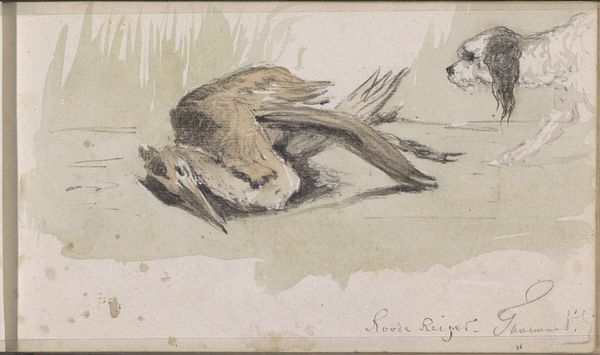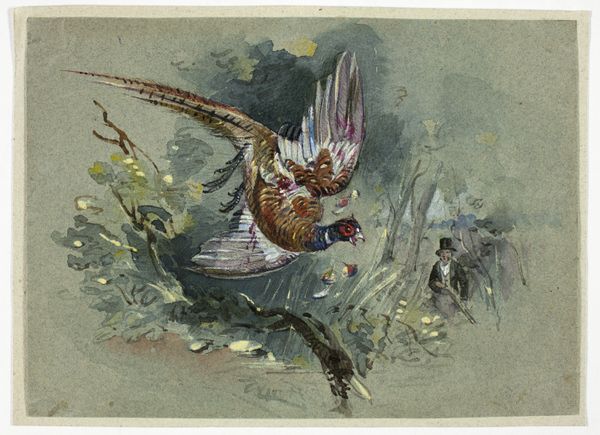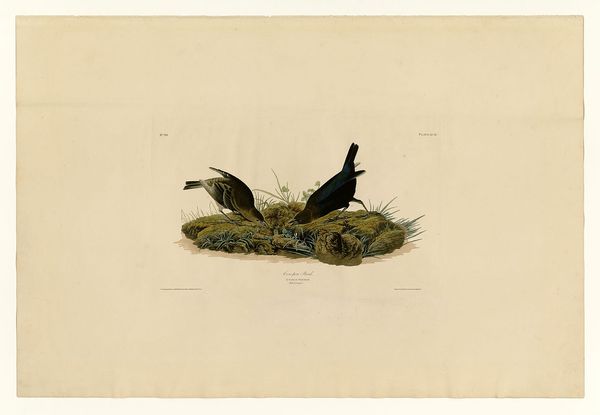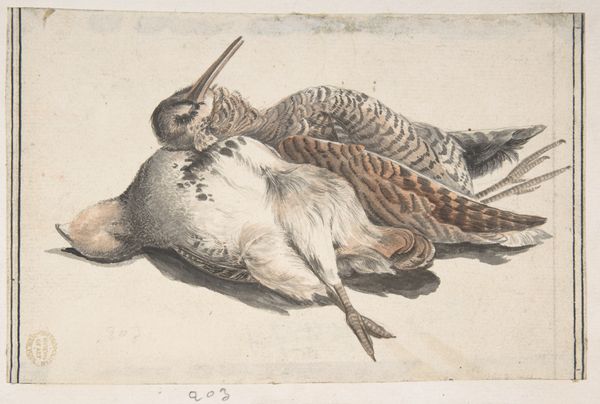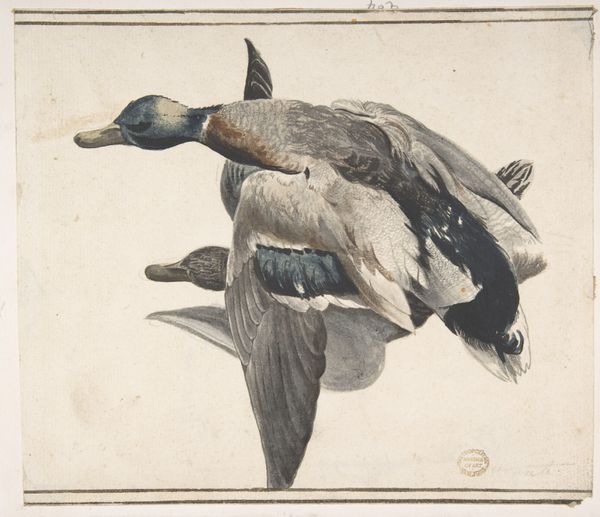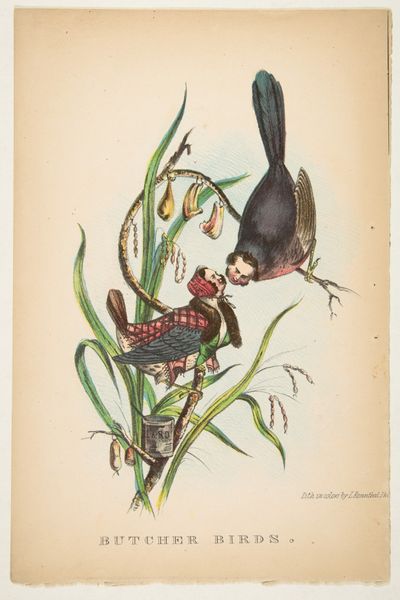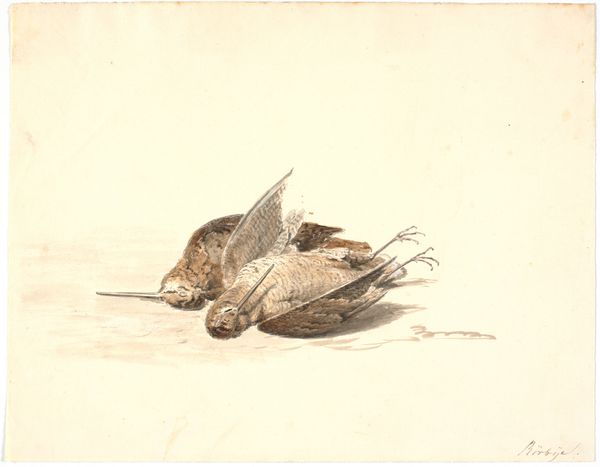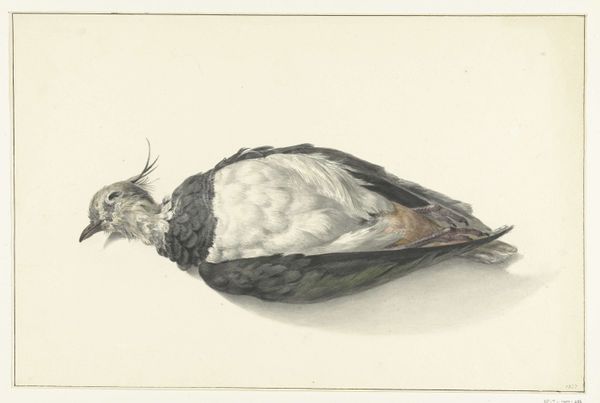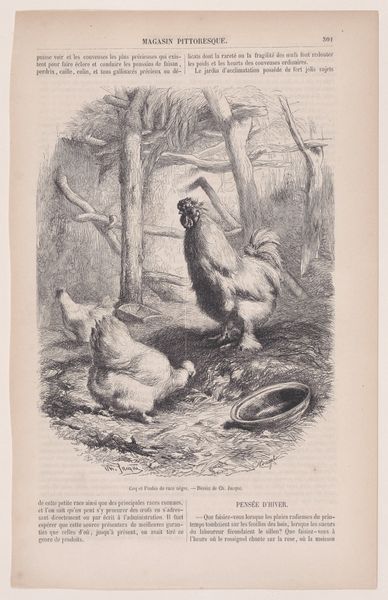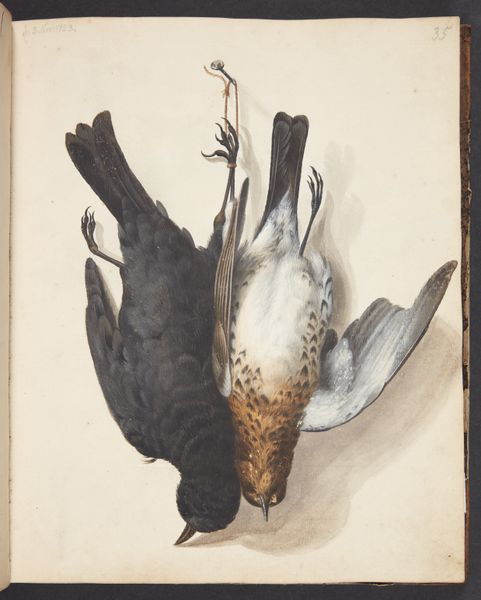
drawing, watercolor
#
drawing
#
water colours
#
oil painting
#
watercolor
#
watercolour illustration
#
genre-painting
#
watercolor
#
realism
Dimensions: sheet: 24.77 × 31.27 cm (9 3/4 × 12 5/16 in.)
Copyright: National Gallery of Art: CC0 1.0
Curator: At first glance, this image strikes me as rather unsettling; it’s the stillness, the lifelessness. Editor: Indeed. We’re looking at William Page’s "A Starling and a Lark," created in 1863, rendered with watercolor and drawing. Page masterfully captures details, yet the scene presents a tableau of death, these beautiful birds rendered into objects. Curator: Right, they're displayed almost like trophies or studies of color and form. This immediately makes me consider historical power dynamics related to humans’ use, domination, and symbolic interpretations of animals. Do these specific birds carry broader cultural significance? Editor: Starlings, often associated with migration and adaptability, could represent journeys, and sometimes symbolize unwelcome change or even abundance taken too far. Conversely, larks frequently embody joy, morning, and song—often linked to freedom. Together, the pair creates tension, highlighting concepts of taking lives and losing freedom. Curator: It makes me think of the Romantic period’s fascination with nature but twisted somehow. The stark realism undermines idealised representations; death is brutally ordinary. What are the underlying messages Page delivers, relating to humanity’s relation to mortality, or Victorian culture at the time? Editor: In mid-19th-century Victorian society, death was more integrated into daily life, although the depiction can seem unsettling by today’s standards. Think of hunting culture and how collecting specimens became integrated to knowledge systems. How could people reconcile this tension between valuing nature and controlling it? Curator: Considering the realistic rendering—do you consider this piece strictly an exploration of aesthetics or perhaps also a subtle socio-political statement disguised as a genre painting? I see echoes of naturalism and the emerging movements toward questioning established societal structures and values through art. Editor: Precisely! In light of contemporary understandings of conservation and ecology, it can invite contemplation about our interventions. Even back then, it may have prompted some to reflect upon our responsibility toward coexisting beings. Curator: I'm still captivated by how powerfully this piece stirs unexpected depths through simple, somber depictions. Editor: An unassuming work holding such resonance, urging us to probe deeper into cultural narratives intertwined within still life traditions.
Comments
No comments
Be the first to comment and join the conversation on the ultimate creative platform.
